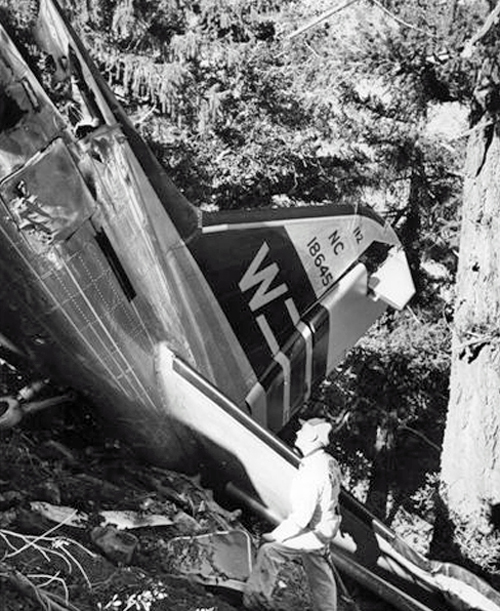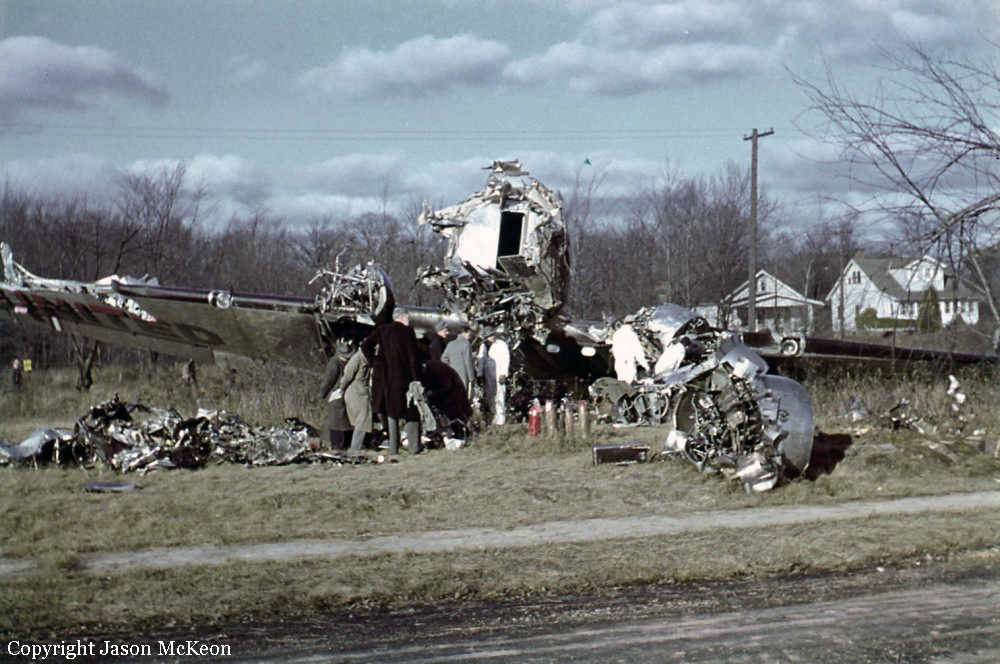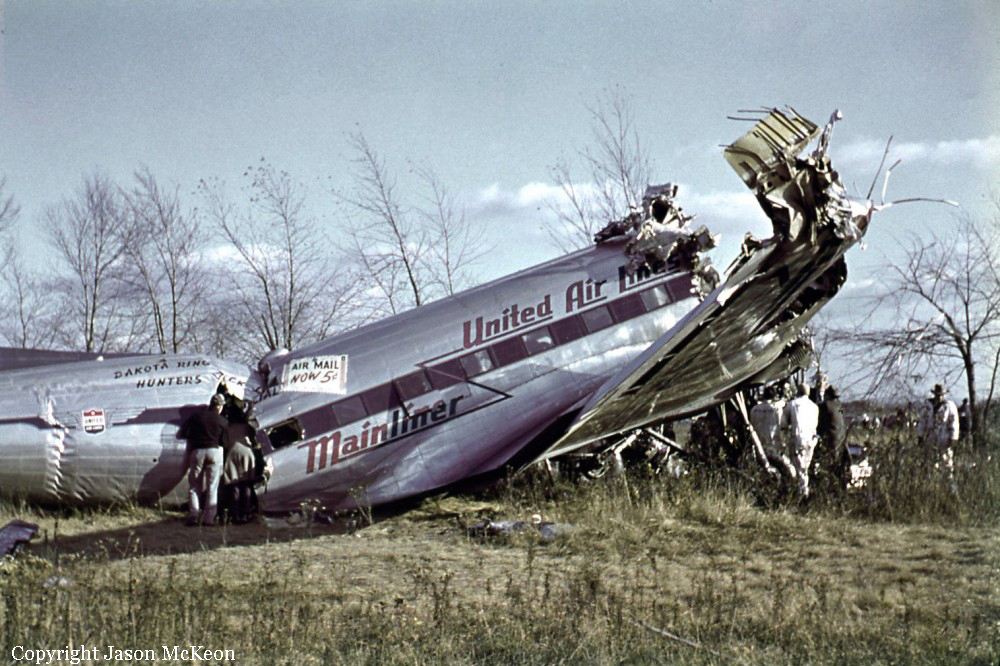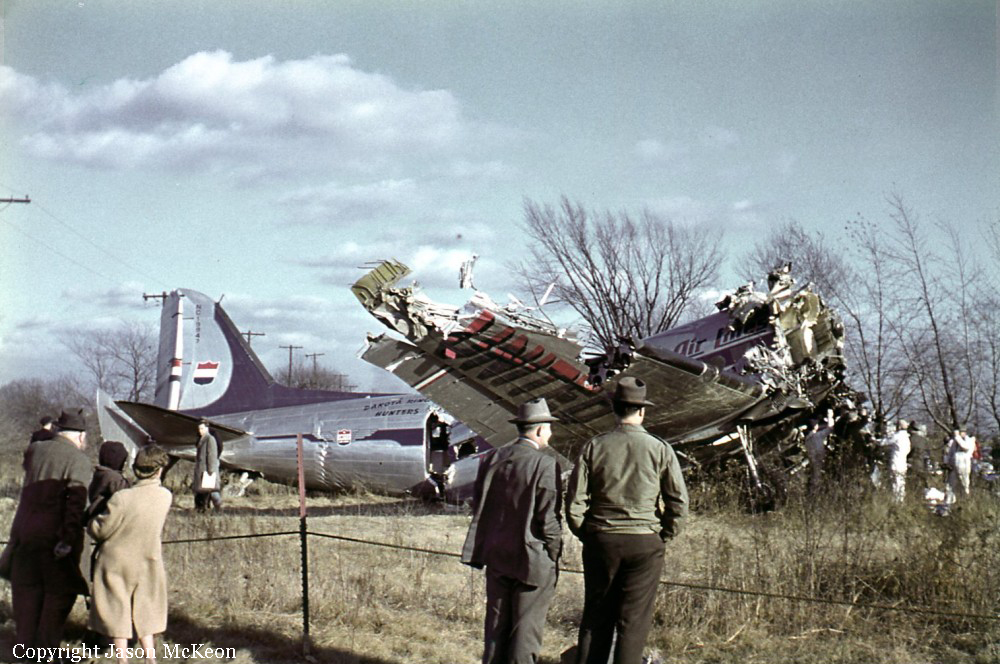Crash of a Curtiss RC5-1 Commando on Mt Rainier: 32 killed
Date & Time:
Registration:
39528
Survivors:
No
Schedule:
El Toro - Sand Point
MSN:
26715
YOM:
1943
Crew on board:
3
Crew fatalities:
Pax on board:
29
Pax fatalities:
Other fatalities:
Total fatalities:
32
Circumstances:
On December 10, 1946, six Curtis Commando R5C transport planes carrying more than 200 U.S. Marines leave San Diego en route to Seattle. The aircraft, flying entirely by instruments at an altitude of 9,000 feet, encounter heavy weather over southwest Washington. Four turn back, landing at the Portland Airport; one manages to land safely in Seattle, but the sixth plane, carrying 32 Marines, vanishes. Search-and-rescue aircraft, hampered by continuing bad weather, are unable to fly for a week and ground searches prove fruitless. After two weeks, the search for the missing aircraft is suspended. The Navy determines that the aircraft was blown off course by high winds and flew into the side of Mount Rainier (14,410 feet). In July 1947, a ranger at Mount Rainier National Park spots wreckage on South Tahoma Glacier. Search parties examine the debris and confirm that it came from the missing plane. Four weeks later, the bodies are found high on the face of the glacier, but extremely hazardous conditions force authorities to abandon plans to remove them for burial. The 32 U.S. Marines remain entombed forever on Mount Rainier. In 1946, it was the worst accident, in numbers killed aboard an aircraft, in United States aviation history and remains Mount Rainier’s greatest tragedy.
Crew:
Maj Robert V. Reilly, pilot,
Lt Col Alben C. Robertson, copilot,
M/Sgt Wallace J. Slonina, crew chief.
Passengers:
M/Sgt Charles F. Criswell,
Pvt Duane R. Abbott,
Pvt Robert A. Anderson,
Pvt Joe E. Bainter,
Pvt Leslie R. Simmons Jr.,
Pvt Harry K. Skinner,
Pvt Lawrence E. Smith,
Pvt Buddy E. Snelling,
Pvt Bobby J. Stafford,
Pvt William D. St. Clair,
Pvt Walter J. Stewart,
Pvt John C. Stone,
Pvt Albert H. Stubblefield,
Pvt William R. Sullivan,
Pvt Chester E. Taube,
Pvt Harry L. Thompson Jr.,
Pvt Duane S. Thornton,
Pvt Keith K. Tisch,
Pvt Eldon D. Todd,
Pvt Richard P. Trego,
Pvt Charles W. Truby,
Pvt Harry R. Turner,
Pvt Ernesto R. Valdovin,
Pvt Gene L. Vremsak,
Pvt William E. Wadden,
Pvt Donald J. Walker,
Pvt Gilbert E. Watkins,
Pvt Duane E. White,
Pvt Louis A. Whitten.
Source:
http://www.historylink.org/index.cfm?DisplayPage=output.cfm&file_id=7820
Crew:
Maj Robert V. Reilly, pilot,
Lt Col Alben C. Robertson, copilot,
M/Sgt Wallace J. Slonina, crew chief.
Passengers:
M/Sgt Charles F. Criswell,
Pvt Duane R. Abbott,
Pvt Robert A. Anderson,
Pvt Joe E. Bainter,
Pvt Leslie R. Simmons Jr.,
Pvt Harry K. Skinner,
Pvt Lawrence E. Smith,
Pvt Buddy E. Snelling,
Pvt Bobby J. Stafford,
Pvt William D. St. Clair,
Pvt Walter J. Stewart,
Pvt John C. Stone,
Pvt Albert H. Stubblefield,
Pvt William R. Sullivan,
Pvt Chester E. Taube,
Pvt Harry L. Thompson Jr.,
Pvt Duane S. Thornton,
Pvt Keith K. Tisch,
Pvt Eldon D. Todd,
Pvt Richard P. Trego,
Pvt Charles W. Truby,
Pvt Harry R. Turner,
Pvt Ernesto R. Valdovin,
Pvt Gene L. Vremsak,
Pvt William E. Wadden,
Pvt Donald J. Walker,
Pvt Gilbert E. Watkins,
Pvt Duane E. White,
Pvt Louis A. Whitten.
Source:
http://www.historylink.org/index.cfm?DisplayPage=output.cfm&file_id=7820
Probable cause:
The crew encountered poor weather conditions with severe icing , turbulence and high winds. At the time of the accident, the aircraft was off track.














